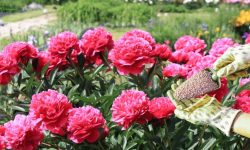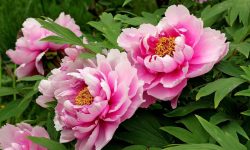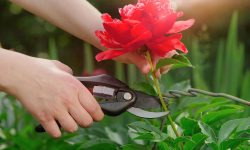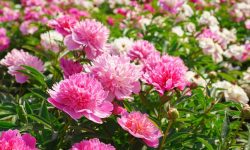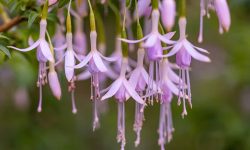Lavender is one of the most beloved aromatic plants worldwide, cherished for its beautiful purple blooms, soothing fragrance, and versatility in gardens and homes. However, growing lavender successfully requires more than just planting it and watering occasionally. One of the most crucial aspects of keeping lavender healthy and thriving all year round is proper pruning. Knowing how to prune lavender correctly not only promotes vigorous growth and abundant flowering but also extends the life of the plant, preventing it from becoming woody and unproductive.
In this comprehensive guide, you will discover everything you need to know about pruning lavender, from understanding why pruning matters to the best timing, techniques, and care tips to ensure your lavender remains vibrant and flourishing through every season.
Why Pruning Lavender Is Essential for Year-Round Health
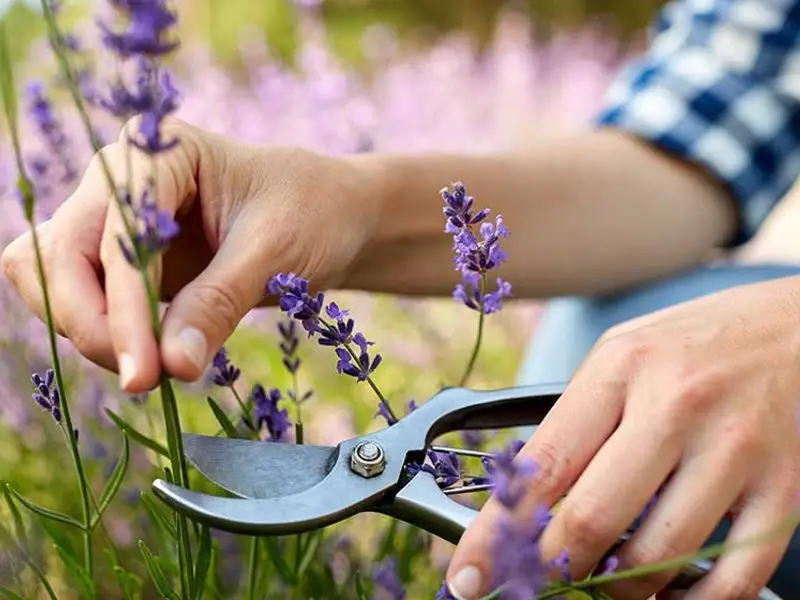
Pruning lavender is not merely an aesthetic choice; it is a vital horticultural practice that significantly influences the plant’s health, appearance, and productivity. Lavender naturally grows in a bushy shape, but over time, it tends to become woody at the base with fewer leaves and flowers on older branches. Without proper pruning, lavender plants can lose their compact form and become leggy, which affects flowering and overall vigor.
Correct pruning encourages the growth of new, fresh shoots, resulting in lush foliage and more abundant blossoms. It also helps to maintain the desired shape and size of the plant, which is especially important for garden design and container growing. Furthermore, pruning improves air circulation within the plant canopy, reducing the risk of fungal diseases that thrive in dense, unpruned bushes.
In addition, pruning plays a key role in the longevity of lavender. Left unpruned, lavender can become so woody that it no longer produces new growth and eventually declines. Regular pruning rejuvenates the plant and keeps it thriving year after year.
Understanding Lavender Growth Patterns
Before diving into pruning techniques, it is helpful to understand how lavender grows naturally. Lavender is a perennial shrub that can live several years if cared for properly. It has a woody base and produces soft, herbaceous stems that bear leaves and flowers each growing season.
New growth emerges from the tips of the stems during spring and early summer. Flower buds form on these new shoots, meaning that pruning too late or cutting into old wood can prevent blooms for the upcoming season. Since lavender doesn’t regenerate well from old, woody branches, pruning must focus on removing old growth to stimulate fresh shoots without damaging the base.
Different lavender varieties may have slightly different growth habits, but all benefit from regular pruning to maintain a balanced ratio between woody and soft growth. Proper pruning respects the natural growth cycle and timing to maximize the plant’s vitality.
The Best Time to Prune Lavender for Optimal Results
Timing is critical when it comes to pruning lavender. The goal is to prune at the right moment to encourage new growth and blooms without causing stress to the plant. Generally, lavender requires two main pruning sessions during the year: a light pruning after flowering and a harder pruning in late winter or early spring before new growth begins.
The first pruning, often called the “deadheading” or “shearing” prune, takes place immediately after the main flowering period. This light prune removes spent flower stalks and encourages a second flush of blooms later in the season. It also tidies the plant and promotes fresh leaf growth.
The second, more substantial pruning is done before the growing season starts, typically in late winter or early spring, depending on your climate. This pruning involves trimming back the plant by about one-third to remove old, woody growth and shape the lavender. Pruning too late in spring risks cutting away emerging flower buds, while pruning too early in winter can expose the plant to cold damage.
Understanding your local climate and observing your lavender’s growth cycle helps determine the exact timing. In mild climates, early spring pruning works well, whereas in colder zones, waiting until late winter or just before new buds appear is advisable.
Tools Needed for Pruning Lavender
Having the right tools makes pruning lavender easier, cleaner, and safer for the plant. The primary tool for lavender pruning is a pair of sharp, clean pruning shears or secateurs. Dull or dirty blades can crush stems, causing damage and increasing the risk of disease.
For thicker, woodier stems, loppers or garden scissors with a strong cutting edge may be necessary. It is important to sanitize your tools before and after pruning sessions to prevent spreading infections among plants.
Comfortable gloves are recommended to protect your hands from scratches or irritants. Additionally, having a small rake or broom helps clean up cuttings and maintain a tidy garden area.
How to Prune Lavender Step by Step
Pruning lavender correctly involves careful observation, technique, and patience. Begin by examining the plant’s overall shape and identifying old, woody branches that need to be trimmed back. Avoid cutting into the very base of the plant, where it is unlikely to regenerate.
Start with the spent flower stems after the first bloom. Using your pruning shears, cut just above the set of leaves or a new shoot, removing the flower stalk but leaving healthy foliage intact. This encourages the plant to redirect energy into new growth rather than seed production.
When it’s time for the heavier pruning in late winter or early spring, reduce the plant’s height by about one-third. Make clean cuts above a pair of healthy buds or leaf nodes. Focus on removing any dead, damaged, or excessively woody stems. This cutback stimulates vigorous new shoots that will support a strong flowering season.
Be cautious not to prune into old, bare wood where there are no signs of life, as lavender struggles to sprout from these areas. If a branch looks lifeless or brittle, it is best to remove it entirely, but avoid cutting so deeply that the plant’s core is exposed.
Maintaining a rounded, compact shape not only enhances the lavender’s appearance but also promotes better air circulation, reducing disease risks. The shape should be balanced and proportionate to the plant’s natural growth habit.
Caring for Lavender After Pruning
After pruning, the lavender plant benefits from some extra care to support its recovery and growth. Applying a layer of mulch around the base helps retain moisture and protect roots, especially if pruning was done in colder months.
While lavender prefers well-drained soil and doesn’t like to be overwatered, watering moderately after pruning helps the plant re-establish new growth. Avoid heavy fertilization immediately after pruning, as this can encourage weak, leggy growth. Instead, use a balanced, low-nitrogen fertilizer or compost in the spring to nourish the plant gradually.
Monitoring for pests and diseases is essential, as pruning wounds can sometimes invite infections. Regular inspection and prompt treatment of any issues help keep lavender healthy.
Common Mistakes to Avoid When Pruning Lavender
Pruning lavender can seem straightforward, but several common mistakes can hinder its growth or cause decline. One frequent error is pruning too late in the season, which can remove flower buds and result in a lack of blooms.
Cutting into the old, woody parts of the plant without any green growth is another mistake. Since lavender does not regenerate well from old wood, this can weaken or even kill the plant.
Over-pruning or cutting the plant back too harshly also stresses lavender, especially if done during extreme weather conditions. It is crucial to prune moderately and at the right time to avoid shock.
Using dull or unclean tools increases the risk of disease transmission and damages the plant’s stems, delaying healing. Always use sharp, sanitized tools for pruning.
Lastly, neglecting to prune at all can cause lavender to become leggy, woody, and less productive, ultimately shortening its lifespan.
Pruning Lavender in Different Growing Conditions
Lavender adapts to a variety of growing conditions, but pruning techniques can vary slightly depending on climate, soil, and planting methods. In hot, dry climates, lavender tends to grow vigorously and may require more frequent pruning to prevent excessive woody growth.
In cooler or more humid regions, pruning should be timed carefully to avoid frost damage and fungal diseases. Gardeners in these areas might delay heavy pruning until the risk of frost has passed.
Container-grown lavender often requires more frequent pruning to keep the plant compact and manageable. Since container plants have limited root space, pruning helps balance growth and prevents overcrowding.
For lavender grown in poor or heavy soils, extra attention should be given to the plant’s overall health before pruning. Ensuring good drainage and proper soil conditions supports better recovery after trimming.
Benefits of Regular Lavender Pruning Beyond Growth
Regular pruning of lavender extends benefits beyond just the plant’s growth and flowering. Pruned lavender produces more fragrant and colorful blooms, which enhances its appeal in gardens and floral arrangements.
Pruning also helps manage the size of lavender plants, making them easier to harvest for culinary, medicinal, or decorative uses. Well-maintained plants require less space and can improve the overall look of a garden.
Moreover, pruning stimulates air movement within the plant, reducing humidity and the chance of fungal infections such as root rot or powdery mildew. This leads to healthier plants with fewer pest problems.
For gardeners interested in propagating lavender, pruning provides an excellent source of cuttings. Fresh growth trimmed during pruning sessions can be rooted to produce new plants, expanding your lavender collection with minimal effort.
Troubleshooting Lavender Pruning Problems
Sometimes, despite best efforts, pruning may not yield the expected results. If lavender appears weak or fails to bloom after pruning, it is important to evaluate several factors. Incorrect timing or cutting into old wood often causes poor regrowth.
Environmental stresses such as drought, poor soil drainage, or nutrient deficiency can also impact lavender’s ability to recover from pruning. Ensuring optimal growing conditions is key to successful pruning outcomes.
If the plant shows signs of disease or pest infestation, addressing these promptly improves overall vigor. Adjusting watering practices and improving air circulation through pruning can mitigate many common issues.
For severely overgrown or neglected lavender, restoration pruning might be necessary. This involves more gradual cutting back over multiple seasons to avoid shocking the plant.
FAQ about How to Prune Lavender
When is the best time to prune lavender?
The best time to prune lavender is twice a year. A light pruning should be done immediately after the main flowering period to remove spent flowers and encourage a second bloom. The more substantial pruning, which involves trimming back old woody growth, should take place in late winter or early spring before new growth starts. Timing depends on your local climate to avoid cutting into emerging flower buds or exposing the plant to frost damage.
How much should I cut back when pruning lavender?
When performing the heavier pruning in late winter or early spring, it is generally recommended to cut back about one-third of the plant’s height. Focus on removing old, woody stems while preserving green, healthy growth near the base. Avoid cutting into bare, woody branches where there are no signs of new shoots, as lavender struggles to regrow from old wood.
Can I prune lavender at any time of the year?
While it is possible to prune lavender lightly at other times, heavy pruning should be avoided outside the recommended periods. Pruning too late in the growing season can remove flower buds and reduce blooms, while pruning too early in winter risks frost damage. Light deadheading after flowering is safe and beneficial to encourage more blossoms.
What tools should I use to prune lavender?
The best tools for pruning lavender are sharp and clean pruning shears or secateurs. For thicker, woody stems, loppers may be necessary. Always sanitize your tools before and after pruning to prevent spreading diseases. Using sharp tools ensures clean cuts that heal faster and reduce damage to the plant.
How often should I prune lavender to keep it healthy?
Regular pruning twice a year is ideal for maintaining lavender health and vigor. Light pruning or deadheading after flowering helps stimulate new growth and prolongs blooming. A more rigorous pruning in late winter or early spring rejuvenates the plant and prevents it from becoming woody and leggy.
What happens if I don’t prune my lavender?
If lavender is left unpruned, it will gradually become woody at the base with sparse foliage and fewer flowers. Over time, the plant may become leggy and less productive, eventually declining in health. Regular pruning keeps the plant compact, encourages fresh growth, and extends its lifespan.
Can pruning lavender help with pest and disease control?
Yes, pruning lavender improves air circulation within the plant, reducing humidity that encourages fungal diseases such as powdery mildew. Removing dead or diseased wood also minimizes pest habitats. Clean pruning cuts and proper care after trimming further decrease the likelihood of infections.
Conclusion
Pruning lavender correctly is an indispensable skill for any gardener who wants this fragrant shrub to thrive year-round. By understanding lavender’s growth habits, timing pruning appropriately, and using the right techniques, you can ensure your plants remain healthy, compact, and floriferous season after season.
While pruning might seem intimidating at first, it becomes easier with practice and observation. Regular trimming not only rejuvenates your lavender but also enhances its beauty and scent, making it a rewarding plant to grow and care for.
Investing time in proper pruning will ultimately lead to a long-lasting, thriving lavender garden that brings enjoyment throughout the year, whether in flower beds, containers, or as part of your landscape design.

